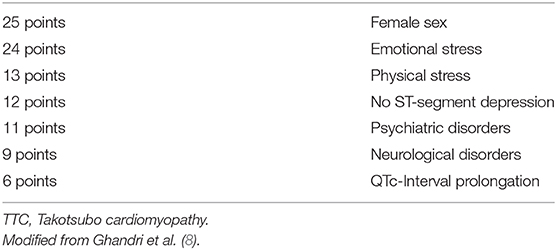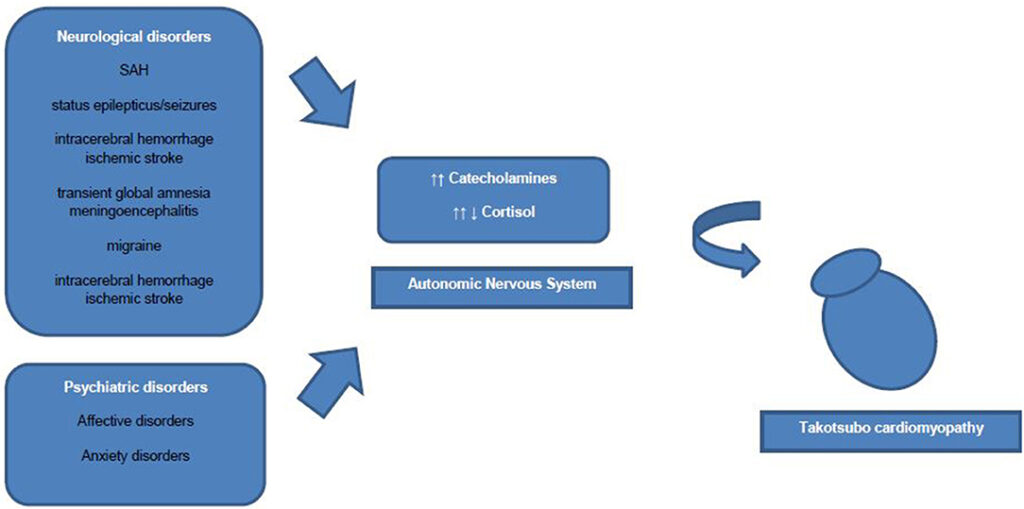Takotsubo Cardiomyopathy, often referred to as “broken heart syndrome,” is a temporary heart condition that can mimic the symptoms of a heart attack. Despite its alarming presentation, this condition is typically reversible and occurs more commonly in women than men. Understanding its causes, recognizing its symptoms, and knowing how it is diagnosed and treated are essential for managing this unique cardiac event.

What is Takotsubo Cardiomyopathy?
Takotsubo Cardiomyopathy gets its name from the Japanese word for an octopus trap, which resembles the shape of the heart during this condition. The left ventricle, the main pumping chamber of the heart, temporarily enlarges and weakens, leading to reduced blood flow. This condition is usually triggered by extreme emotional or physical stress, earning it the nickname “broken heart syndrome.”
Key Characteristics
- Sudden onset of chest pain or shortness of breath
- Temporary weakening of the heart muscle
- No evidence of blocked coronary arteries
- Reversible with proper treatment
Causes of Takotsubo Cardiomyopathy
The exact cause of this condition is not fully understood, but researchers believe it is closely linked to the body’s response to stress. When someone experiences intense emotional or physical stress, the body releases a surge of stress hormones such as adrenaline. These hormones can temporarily disrupt the normal functioning of the heart, leading to the characteristic changes seen in this condition.
Emotional Triggers
- Death of a loved one
- Divorce or relationship issues
- Unexpected financial loss
- Severe anxiety or panic attacks
Physical Triggers
- Major surgery
- Severe illness or infection
- Asthma attacks
- Physical trauma or injury
While these triggers are common, some cases occur without any identifiable stressor, making it challenging to predict who might be affected.
Symptoms of Takotsubo Cardiomyopathy
The symptoms of this condition are similar to those of a heart attack, which is why it is often mistaken for one. However, unlike a heart attack, there is no blockage in the coronary arteries. Recognizing these symptoms early can help ensure prompt medical attention and proper diagnosis.
Common Symptoms
- Chest pain, often described as pressure or tightness
- Shortness of breath
- Rapid or irregular heartbeat
- Fainting or dizziness
- Nausea or vomiting
When to Seek Medical Attention
If you experience sudden chest pain or difficulty breathing, it is crucial to seek emergency medical care immediately. While these symptoms may indicate Takotsubo Cardiomyopathy, they could also signal a heart attack or another serious condition.
Diagnosis of Takotsubo Cardiomyopathy
Diagnosing this condition involves ruling out other potential causes of the symptoms, particularly a heart attack. A combination of tests and imaging studies is used to confirm the diagnosis and differentiate it from other cardiac events.
Medical History and Physical Examination
Doctors will begin by asking about your symptoms, recent stressors, and medical history. They will also perform a physical examination to check for signs of heart failure or other abnormalities.
Electrocardiogram (ECG)
An electrocardiogram records the electrical activity of the heart. In this condition, the ECG may show changes similar to those seen in a heart attack, such as ST-segment elevation or T-wave inversion. However, these changes are temporary and resolve as the heart recovers.
Echocardiogram
An echocardiogram uses sound waves to create images of the heart. In this condition, the left ventricle may appear enlarged and balloon-like, with reduced pumping ability. This distinctive appearance helps differentiate it from a heart attack.
Coronary Angiography
This procedure involves injecting a contrast dye into the coronary arteries to check for blockages. In this condition, the arteries are typically clear, unlike in a heart attack where blockages are present.
Blood Tests
Blood tests may reveal elevated levels of certain enzymes, such as troponin, which are markers of heart damage. However, the levels are usually lower than those seen in a heart attack.
Treatment of Takotsubo Cardiomyopathy
Since this condition is temporary and resolves on its own, treatment focuses on managing symptoms, preventing complications, and addressing the underlying stressors. Most people recover fully within weeks, but close monitoring is essential to ensure proper healing.
Medications
Several medications may be prescribed to support heart function and alleviate symptoms:
- ACE inhibitors or beta-blockers: These medications help reduce the workload on the heart and prevent further damage.
- Diuretics: These help remove excess fluid from the body, reducing strain on the heart.
- Aspirin or anticoagulants: These may be prescribed to prevent blood clots, especially if there is concern about reduced blood flow.
Lifestyle Modifications
Making certain lifestyle changes can aid recovery and reduce the risk of recurrence:
- Managing stress through relaxation techniques such as meditation or yoga
- Engaging in regular, moderate exercise as advised by a doctor
- Maintaining a heart-healthy diet rich in fruits, vegetables, and whole grains
- Avoiding smoking and excessive alcohol consumption
Psychological Support
Since emotional stress is a significant trigger for this condition, addressing mental health is an important part of treatment. Counseling or therapy may be recommended to help individuals cope with grief, anxiety, or other emotional challenges.
Monitoring and Follow-Up
Regular follow-up appointments are essential to monitor heart function and ensure complete recovery. Doctors may repeat imaging tests, such as an echocardiogram, to confirm that the heart has returned to normal.
Potential Complications
Although this condition is generally reversible, complications can occur, especially if left untreated. These may include:
- Heart failure due to prolonged weakening of the heart muscle
- Irregular heart rhythms, such as atrial fibrillation
- Blood clots that could lead to a stroke
- Low blood pressure, which can cause dizziness or fainting
Close monitoring and adherence to treatment can help minimize these risks and promote a full recovery.
Preventing Recurrence
While it is not always possible to prevent this condition, certain steps can reduce the likelihood of recurrence:
- Identifying and managing sources of chronic stress
- Seeking professional help for mental health concerns
- Staying physically active and maintaining a healthy weight
- Following a balanced diet and avoiding unhealthy habits
By taking proactive measures, individuals can protect their heart health and improve their overall well-being.





